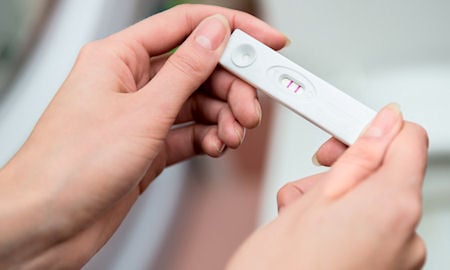
NCOART
The History of the National Coalition for Oversight of Assisted Reproductive Technologies (NCOART)
The National Coalition for Oversight of Assisted Reproductive Technologies (NCOART) has become a successful forum for discussion of issues by organizations involved in the assisted reproductive technologies (ART) in the United States.
In 1996 the Society for Assisted Reproductive Technology (SART) organized the first Oversight Committee Meeting with representatives from SART, the American Society for Reproductive Medicine (ASRM), RESOLVE (the national infertility organization for consumers) and the Centers for Disease Control (CDC). Subsequently, the “committee” became a “coalition” and added representatives from the Food and Drug Administration (FDA), National Institutes for Health (NIH), American Association of Tissue Banks (AATB), American Bar Association (ABA) and the American Infertility Association (AIA). Representatives from the Federal Trade Commission (FTC) and the American Medical Association (AMA) have also attended at various times.
Recognizing that none of the parties had regulatory or legal authority to force compliance, the committee’s purpose was “To serve as an interdisciplinary advisory body that, on an ongoing basis, fosters quality assurance of ART services for the consumer, provider, and public at large by monitoring and evaluating the reporting and use of ART success rates.” SART provided financial and logistical support for the first two years. Since that time, each organization has financially supported its own participation, while SART continues to provide logistical support. The Chair of NCOART alternates between SART and RESOLVE on a two year rotation. This structure and operational independence increases the credibility and impartiality of NCOART.
The first meeting was held January 13, 1997 in Washington, DC. Each organization reported its activities. Issues that were discussed included reporting and publication of ART outcomes, outcomes validation, consumer guide for ART, advertising by ART programs, management of data from Canadian ART clinics, shared risk/money back guarantee plans, identification of all ART programs, the need for a research category for ART cycles so that all cycles were reported, definition of cycles and functioning of the Oversight Committee. It was decided that the Oversight Committee’s role would be to identify issues, alert appropriate organizations to the issues and, where appropriate, make suggestions and request follow-up. The action list included: the Oversight Committee to create an annual summary report of activities to be included with the national report; RESOLVE to provide feedback to the Committee on consumer requests for information on preimplantation genetic diagnosis (PGD); CDC to make final determination on data from Canadian ART clinics, clarify reporting of donor cycles and determine the minimum number of cycles for data inclusion; SART to add a statement to disclosure form that all cycles are included in the reported data from each clinic, determine handling of requests for research cycles, and modify guidelines for advertising and use of clinic-specific reports; all groups to identify non-SART ART clinics; CDC and SART to submit guidelines to protect confidentiality of data.
The mission of NCOART, its goals and strategy have been modified only slightly since that first meeting. Its mission is now stated as: To serve as an interdisciplinary body which oversees the provision of assisted reproductive technology services in the United States. The goals of NCOART are to:
- Identify issues.
- Develop action plans in response to identified issues.
- Inform, educate, and make recommendations to NCOART members regarding issues.
- NCOART members are to provide follow up on the recommendations
Meetings are held twice yearly. Numerous issues have been addressed since NCOART’s inception. Some of these are:
- Quality assessment, accreditation, regulation and registration of ART laboratories
- Good tissue practices in ART laboratories
- Practice guidelines for ART clinics
- Collection, validation and reporting of ART pregnancy rates
- Advertising by ART clinics
- Personnel qualifications and requirements for SART membership
- Sanctions for unprofessional conduct
- Infertility insurance and money-back guarantees
- Consumer protection from experimental techniques and informed consent
- Somatic cell nuclear transfer (cloning) and stem cell research
- Product recall of laboratory culture media
- Public education about ART and published ART results
- Reduction of multiple births and birth defects in ART
- Egg donor compensation and egg donor agency regulation
- Sperm and egg donor screening and embryo donation guidelines
- Ethics in ART, e.g. ART for HIV discordant couples; age discrimination
- Family Law and ART, e.g. definitions of parenthood, child custody
- Standard definitions to be used in ART and standardized consent forms
- Research funding in ART, especially for long term birth outcomes studies
- Educational and training programs for ART professionals
- Bioterrorism and ART laboratories
- Transfer of genetic material and genetics in ART
- International monitoring, registries and regulation of ART
- Prevention of infertility
- Disposition of cryopreserved embryos
- Education of the media about ART
- Impact of the President’s Council on Bioethics
NCOART now has eight years of very successful history and accomplishment. The original decision to establish this committee has been shown to be important and constructive because of the many benefits that shared information, communication, assessment, action and follow-up have brought to the participating organizations. However, the most important contribution of NCOART has been to improve the quality of care for patients undergoing ART. NCOART is an excellent, and possibly unique, example of how much can be accomplished when clinicians, scientists, other professionals, consumers and government representatives work together in a spirit of shared commitment to a common goal.
--David Adamson, MD

